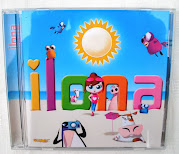Wow! I love your woodland pictures. I used to do old style embroidery years ago, tablecloths, tray cloth etc, but there's no need for those today. Would love to know how you're creating the woodland scenes. Are they for framed pics or being used for something else. How did you learn this? Would love to have a go and would appreciate your help. Thank you. Love your blog.
The woodland picture is a little bit different to what I normally make. I decided to use up some scraps, and chose fabric which had a browny-green colour. It is one picture, not several. I first chose the frame, and I'm making the picture to fit it. Thicker fabric works best for this, it doesn't matter that it frays, it will add to the texture.
I am using an old cushion cover for the backing, it's a loose weave hessian type fabric. I cut the pieces into oblongs and squares, and assembled them on the fabric like a jigsaw, mixing them up. I did try using iron on webbing to stick them down but it didn't work very well, so I loosely stitched them into place.
I decided on a tree and cut long pieces of dark brown fabric which looks like bark, and arranged them into a trunk and branches, using the machine to sew them on. Next cut some fluff from a piece of green fur fabric, and stitched this over the branches with a running stitch.
Now I am adding lots of stitching to build up layers, to cover the joins, and to add texture and mix up the colours.
The stitches are mainly simple running stitches, added randomly all over it. Most of it is single strand embroidery thread, with some wool, and thicker thread. I am trying to picture in my mind what the floor of a wood might look like.
When starting to put together a design you could look for a picture in a magazine, and make a simple outline drawing on a piece of A4 paper, then find the fabric which might suit the picture you have in mind. If the picture is structured, cut templates for the pieces first, from paper, and use these to cut out the fabric.
I have always known how to do a few basic embroidery stitches learnt at school, after that it was a case of reading books and practicing. You can go back to your old style stitches and apply them to any piece of work you like. Nobody taught me how to do textile art, I get an idea and experiment with materials.
Here is a video on basic stitches to get you started.
Ideas for patchwork stitching.
There are lots of tutorials on yooootooob for every kind of textile art. I would advise anyone who is wanting to have a go to watch as much as you can. I can't tell you here what to do, I can only encourage you to do some research, have a go, use your imagination, and practice practice, practice.
Thanks for popping in. We'll catch up soon.
Toodle pip



















Very nice, it looks like it would take a long time to complete, but I'm sure it's worth it :)
ReplyDelete" I am trying to picture in my mind what the floor of a wood might look like. "
ReplyDeleteYou forgot to put the litter in! Grin!
If your correspondent wants to do something different, all the skills to do one of your fiber art projects are the same skills it takes to make an old-fashion crazy quilt.
You are very talented Ilona.I so admire anyone who can produce such works of art.A few years ago I helped at a local school and there was an art and textile department and the A level students had their work on display.There were layered hats and bags ,really gorgeous with varied items attached .Stunning .You really are a woman of many talents ,and so generous with your knowledge.Rock on ! x
ReplyDeleteIlona I have just discovered Noriko Endo a Japanese quilt artist. have a look at her work. It is spectacular and I wish I had a tenth of her talent,
ReplyDeleteHi Brenda. Amazing work, and my what a huge work surface she has with a big sewing machine.
Deleteyes thats a long arm machine - way out of my budget and room space. stunning work though
DeleteThanks for the link to the video, Ilona. It was great to refresh my memory about the correct way to do the basic stitches as I sometimes "wing it" when I can't remember exactly! Your woodland picture is truly a work of art and you have a great eye for shapes and colours. I'm making a textile sign for our latest upcycling shop where I volunteer and have been playing about with my preloved fabric stash to make something eyecatching. Enjoy every blogpost you write-thank you. Catriona
ReplyDeleteThanks, I nearly had to ask you - or google 'French knots'; I was taught many years ago and haven't practised since. The other ones I knew about but have forgotten so this has jogged the memory. Brilliant and easy to follow, many thanks. Amanda
ReplyDeleteBeautiful!
ReplyDeleteWould like to see it in real life. Very good work. Natalie
ReplyDeleteLovely explanation of the process of your pictures. Really interesting. Thanks for sharing the ideas and pictures.
ReplyDeleteI really enjoyed this post!
ReplyDeleteLoved your tree!
Trees are favorites of mine.
Thanks for the video, I am very much out of practice.
This is the first time I've encountered pictures made with scraps of fabric and stitches. Your picture, plus the others ones pictured, are really outstanding. The woodland picture is just wonderful, and the idea of "green fluff" would never have occurred to me. That gave me a big smile. Thanks for waking my brain up! Sheri
ReplyDeleteLovely work..you're obviously enjoying yourself and it shows
ReplyDeleteIlona you sure do have a gift for creating fabric pictures.
ReplyDelete